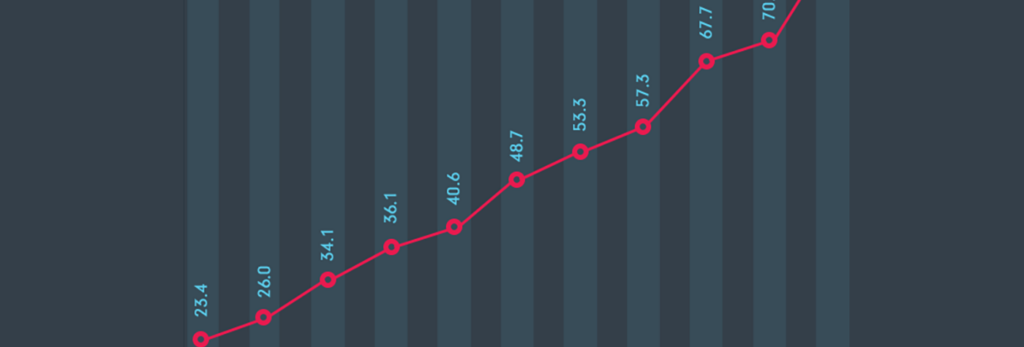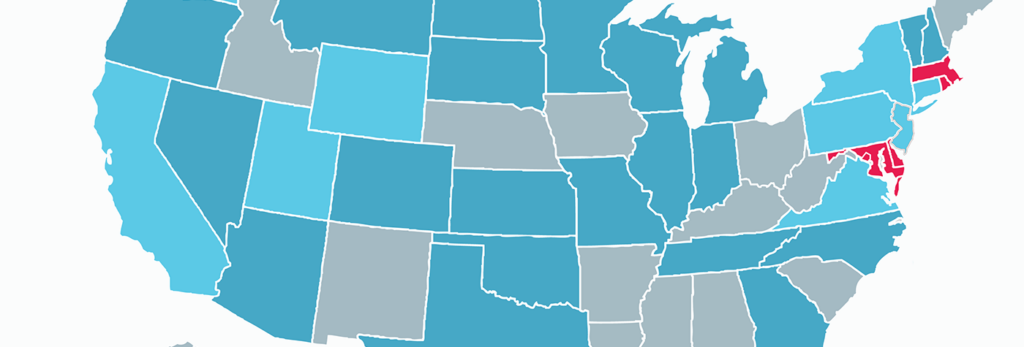The Near Future Becomes Closer with New Cable Broadband Technology

For years, upgrading the speed of broadband networks has typically focused on increasing how fast consumers can download movies, stream their favorite content or run dozens of internet-connected devices. But a new technology just introduced by CableLabs, the cable industry’s R&D consortium, will soon enable consumers to upload items just as fast as they can download them. This kind of technology has long been seen as the key to unlocking a whole range of exciting new home-based tech experiences, such as virtual and augmented reality and long-distance collaboration. This new technology – known
New Report Says Fixed Broadband in the U.S. is Fast and Getting Faster

In their latest Speedtest Market Report, independent internet testing group Ookla reveals that the average download speed of fixed wired internet in the United States has increased from 47.1 Mbps to 64.2 Mbps over the last year. Average upload speeds have also increased over the same period of time, from 15.4 Mbps to 22.8 Mbps. In the report, credit for this increase goes to cable providers who, according to Ookla, are “making all the necessary investments and infrastructure upgrades to roll out DOCSIS 3.1 and to the increased affordability of higher tiered packages.” In addition to
America is Catapulting into a Gigabit Future

Over the next four years, internet traffic is expected to quadruple, the number of internet connected devices will outnumber the world population three-to-one, the total percentage of internet traffic from video will be upwards of 82 percent, and there will be 4.6 billion global internet users. We’re heading toward a world where today’s already fast internet speeds will be insufficient for the technologies and experiences we’ll demand. Fortunately, internet providers across America are building their networks not just for what’s required today, but for the needs of the future. Recent gigabit
Cablelabs’ New Open-Source Solution Could Change the Future of IOT

CableLabs, the non-profit innovation and R&D lab supporting the cable industry, is perhaps best known for developing the technologies that drive cable internet and television. For example, they’re the group responsible for developing DOCSIS, the technology standard capable of delivering gigabit broadband to communities across the country using existing infrastructure. More than just designing the nuts and bolts of internet and television technology, CableLabs is also thinking big on the futureof telehealth, driverless cars, virtual reality, and the internet of things, which, as a technology
New From the Near Future: A Smarter Vision for Healthcare

This past May, attendees at The Near Future in Washington, D.C. were treated to talks from world-renowned technology, innovation, and business experts who presented on how technologies of the future will one day change how we live, learn, work, and play. They brought on stage the latest in virtual reality, augmented reality, holograms and artificial intelligence and shared how these technologies are already transforming the world around us. The event was inspired by a video, produced by CableLabs, that showcased emerging technologies once considered science fiction. On Monday, CableLabs
By 2021, Connected Devices Will Outnumber Humans Three to One

There’s a good chance last Christmas that you or someone close to you received a virtual assistant like an Amazon Echo or Google Home. These virtual assistants were the most popular gift ordered on Amazon.com at the end of 2016. Powered by a continuous connection to the internet, these gadgets interact with the other internet-connected devices in your home – things like your smart thermostat or Wi-Fi lightbulbs – and turn the Internet of Things from a disparate collection of connected objects into a unified smart home. According to a new report by Cisco, the number of internet-connected
Getting To Gigabits

For the better part of two decades, cable internet providers have focused on building, operating, and improving the physical infrastructure that supports high-speed, consumer internet service. Over two decades and four iterations of a technology platform called DOCSIS, cable internet providers alone have invested over $250 billion in private capital to build speed at a scale that extends to 93 percent of American households. But the work is far from done. As consumer demand for internet service continues to explode, so too must the capabilities of wired and wireless networks. That is why cable
Ten U.S. States & DC Rank Among the Fastest World Internet Speeds

The results from the latest Akamai State of the Internet report are in and once again, 10 U.S. states and D.C. rank among the top 20 fastest internet territories around the globe. Delaware cracked the top five with an average peak speed of 111 Mbps, next to Hong Kong and South Korea. National rankings are reflective of infrastructure and technology, but are also heavily impacted by basic geography. A country by country comparison would pit a country like Singapore, which covers about 678 Km2 against the U.S. which comes in over nine million Km2. Which is why it makes more sense to look at it
America's Internet Speeds Continue to Soar

Every quarter, Akamai releases a State of the Internet Report. This study is a widely accepted third-party evaluation of not just the health of the overall internet, but a comparison of states, regions, and countries’ internet speed, adoption, and security. Earlier this week, Akamai released its 2017 1st Quarter report and it revealed that on a number of key metrics, the internet in the United States took a huge leap forward compared to other countries. The US is now in the top ten countries for adoption of internet speeds over 15 and 25 Mbps as well as the top ten for overall average speed
How Fast is America's Internet?

Every year technology gets better. Devices become less expensive, software improves, and of course the internet gets faster. How much faster? According to the latest Akamai State of the Internet Report, the over the last year the peak average internet connection speed in the United States has gone from 67.7 Mbps to 86.5 Mbps. This is a 28 percent increase, a remarkable jump in speed in just one year. And America’s fastest region, Delaware, has a peak average internet speed of 111 Mbps making it the sixth fastest region on earth. New to the top states list is Wyoming, America’s least populated
